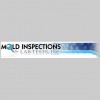Mold and condensation problems occur when the relative humidity is too high. Relative humidity is the amount of water vapor in the air compared to the amount the air can hold. Warm air can hold more moisture than cold air. So, if warm air and cold air contain the same amount of moisture, the warm air will have a lower relative humidity.
Luckily, San Diego has an average humidity of under 70% and therefore we are looking for water leaks. Two conditions cause the relative humidity to rise: when the temperature falls or when moisture is added to the air. Cold surfaces, such as windows or the inside of an exterior wall, create localized cold spots which reduce the amount of moisture the air can hold and raise its relative humidity.
When water vapor is produced but is not being removed from the house, this, too, will raise the relative humidity. Mechanical ventilation removes moisture from the house through ducts, so it doesn't have to travel through leaks in the walls, floors, and ceilings where it may hit colder surfaces and condense.
Luckily, San Diego has an average humidity of under 70% and therefore we are looking for water leaks. Two conditions cause the relative humidity to rise: when the temperature falls or when moisture is added to the air. Cold surfaces, such as windows or the inside of an exterior wall, create localized cold spots which reduce the amount of moisture the air can hold and raise its relative humidity.
When water vapor is produced but is not being removed from the house, this, too, will raise the relative humidity. Mechanical ventilation removes moisture from the house through ducts, so it doesn't have to travel through leaks in the walls, floors, and ceilings where it may hit colder surfaces and condense.




